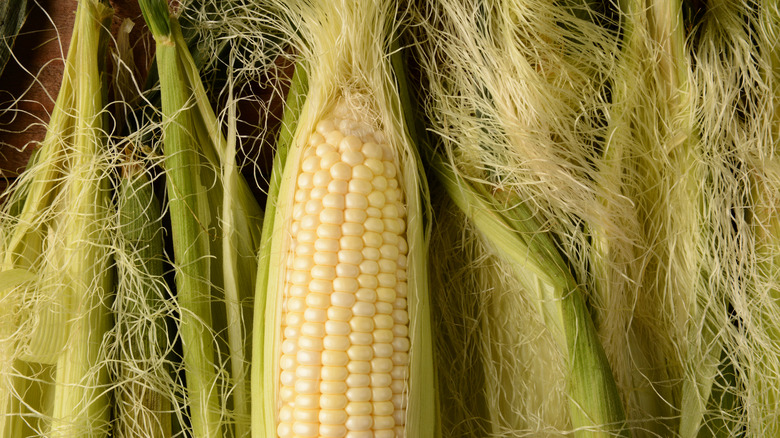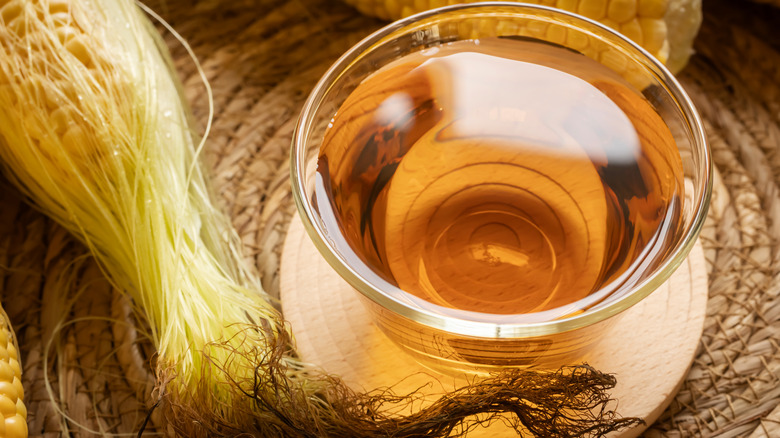Don't Throw Away Corn Silk — Here's How To Put It To Good Use
An ear of corn is extremely versatile, and while it's most commonly enjoyed grilled in various delicious ways, nearly every part of it can be put to use: The plump kernels can be ground into cornmeal for baking, while the husks serve as perfect wrappers for making traditional tamales. Even the stalks have practical uses in cooking and crafts. This makes the humble cob of corn a remarkably resourceful ingredient overall. One of the most overlooked parts is the silk — the long, threadlike fibers beneath the husk on an ear of corn — which actually have many uses, both inside and outside the kitchen. To learn more, Food Republic consulted Kent Rollins, host of Outdoor Channel's "Cast Iron Cowboy."
According to Rollins: "Dried silks can be used for many medicinal purposes, from making tea to a poultice." Corn silk tea — which has a mild, earthy, and slightly sweet flavor — is easy to make at home. Simply place the dried silks you've collected into a mug or pot (teabags or an infuser make this much easier), then add boiling water, let the infusion occur, and enjoy.
Corn silk is also beneficial because it contains a range of plant compounds responsible for various health effects. According to Rollins, it "helps lower blood pressure, is good for inflammation, and even helps regulate blood sugar. That tea is full of antioxidants." Other potential benefits of corn silk include lowering cholesterol as well.
How traditional cuisines or remedies use corn silk
Corn silk has played an important role in traditional remedies across multiple cultures. In North America, where corn is native, it was widely used in Native American medicine to address a variety of ailments. One of its most valued properties is its natural diuretic effect, which made it useful for treating urinary tract infections, kidney stones, and inflammation of the bladder and prostate. Interestingly, the medicinal use of corn silk is not limited to the Americas. Historical records show that as early as the 15th century, during China's Ming Dynasty, corn silk — known there as yu mi xu — was recognized for its therapeutic benefits and incorporated into traditional Chinese medicine, which is still the case today.
The uses of corn silk are not just limited to medicine, however. For example, you could deep-fry dried corn silk, season it with some salt and pepper, and use it as a creative, crispy garnish on a grilled Mexican street corn salad or seared polenta with tomato sauce. Kent Rollins also had his own way of enjoying corn silk. "We'd build a fire, get the coals white hot, and throw the soaked corn — husks and all — right into the fire. When the husks turned black, we'd pull them out, cut the ends off, and the silk slid right off. A little homemade butter, salt, and pepper, and it was the reward of a hard day's work," he recalled. So there really are many creative ways to turn overlooked corn silk into a cherished, delicious treat.


